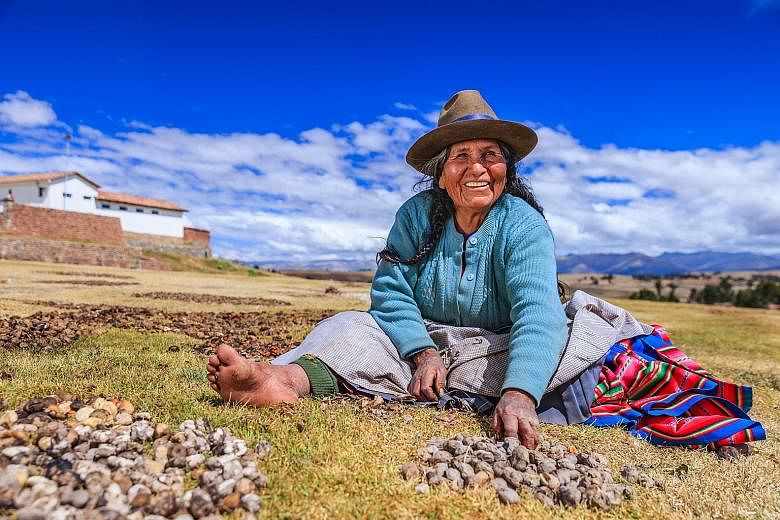What did the Incas and National Aeronautics and Space Administration (Nasa) have in common?
They both faced the problem of long journeys through harsh, forbidding territory.
And remarkably, centuries before Nasa's quest for ways to feed astronauts in space, the Incas had already found the answer.
Their empire ran up and down the spine of the Andes, with a network of roads, terraced farms and breathtaking mountain-top outposts stretching the same distance as Stockholm to Cairo.
They needed nourishing foods that travelled well and could be stored in bulk for a long time.
Enter chuno, one of the Incas' discoveries that persists to this day.
Chuno (pronounced Choon-yoh) is essentially freeze-dried potatoes, developed by a culture that had none of today's food-processing technology.
Villagers in the altiplano, the high tablelands of Bolivia and Peru, still make it the way the Incas did, using the warm days and frosty nights of June to repeatedly freeze and thaw the potatoes, and stomping them with their bare feet to remove the skins and liquids.
Chuno can be stored and eaten for a decade after it has been shrunken and dried.
"It was the food that sustained Inca armies," said Charles C Mann, an author who has written extensively on the Americas before the European conquest.
Chuno takes a little getting used to. Newcomers who try it often say that it tastes nothing like a potato, likening its unusual flavour to styrofoam or chalk.
What about the smell? It is better not to ask, though chuno's aroma has been compared to dirty socks. It does win some style points for its earthy appearance, akin to truffles.
The descendants of the Incas still prize chuno, which is often served with aji, an Andean chilli pepper.
When money runs short to buy canned foods or there are no llamas available to turn into jerky, or the harvest from their gardens and farms disappoints, Andean families can always rely on chuno.
"This ability to store food is important in a region where droughts can destroy a year's crop," said Ms Clare Sammells, an anthropologist.
"Chuno provides the food needed to survive."
NEW YORK TIMES

